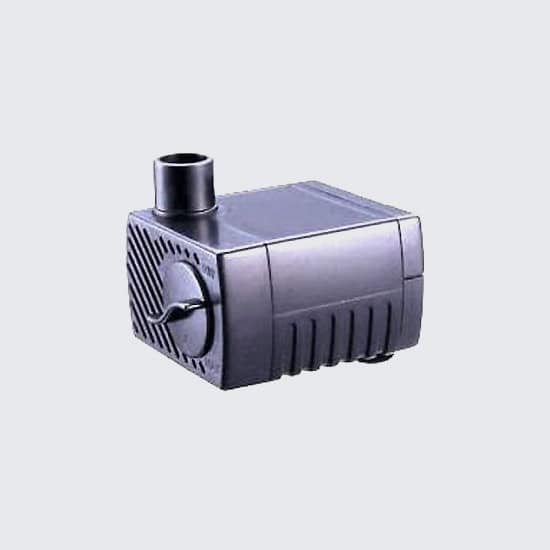When enhancing the aesthetic appeal of your garden, park, or outdoor space, a fountain can be a captivating centerpiece. The soothing sound of trickling water, the visual elegance of cascading water features, and the ability to create a serene oasis in your backyard all depend on one crucial component: the fountain pump. Choosing the right fountain pump is paramount in ensuring your water feature operates efficiently, effectively, and beautifully. In this article, we will explore the importance of selecting the correct fountain pump and offer insights into the key factors to consider when making this choice.
To make an informed decision about the ideal fountain pump for your needs, it’s essential to understand the various factors that come into play. These factors encompass the types of fountain pumps available, sizing considerations, important features, and the proper installation and maintenance of your fountain pumps. We will delve into these aspects, enabling you to select a fountain pump that aligns perfectly with your vision and requirements.
Types of Fountain Pumps
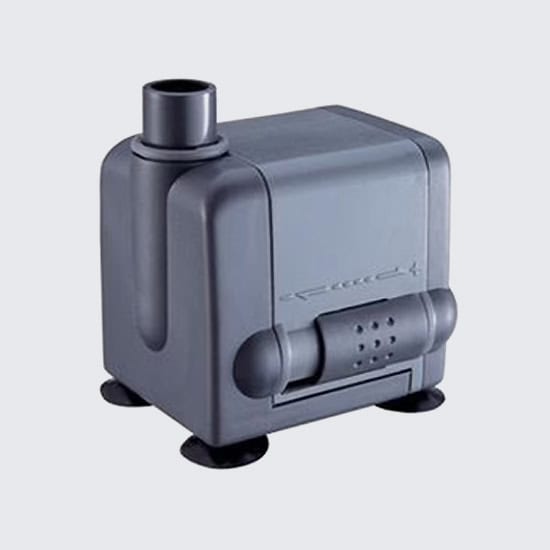
Submersible vs. External (Out-of-Water) Pumps
One of the fundamental choices regarding fountain pumps is deciding between submersible and external (out-of-water) pumps. Submersible pumps are placed underwater within the fountain basin, making them inconspicuous and quiet. External pumps, on the other hand, are installed outside of the water, offering easier access for maintenance but with the drawback of increased noise and visibility. Understanding the pros and cons of each option is critical to selecting the best fit for your specific fountain design.
Flow Rates and Head Height Considerations
Flow rates and head height are key performance metrics for fountain pumps. The flow rate determines the volume of water the pump can circulate, while head height represents the maximum vertical distance it can push water. Choosing a pump with the right balance between flow rate and head height is vital for achieving the desired visual and auditory effects in your fountain. We will delve into the significance of these considerations and how to match them to your fountain design.
Energy-Efficient and Solar-Powered Options
In an era of increasing environmental consciousness, energy efficiency is a crucial consideration. We’ll explore the benefits of energy-efficient fountain pumps and how they can reduce operating costs and minimize your ecological footprint. Additionally, we’ll discuss the advantages of solar-powered fountain pumps, which provide a sustainable and eco-friendly alternative, especially for remote or off-grid locations.
Fountain Pump Sizing
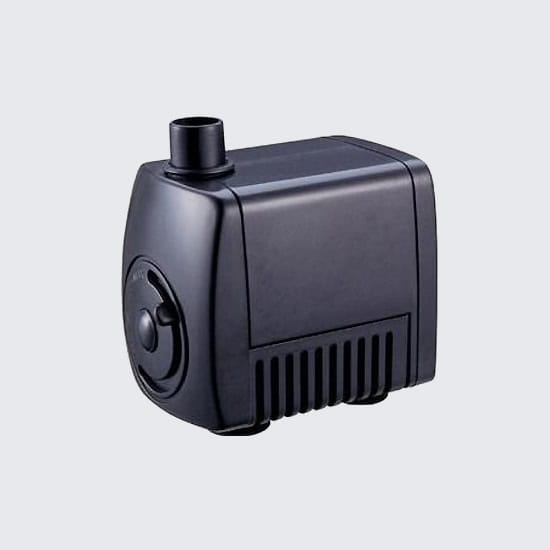
Determining the Required Flow Rate
To ensure your fountain performs as expected, it’s essential to determine the required flow rate based on the size and design of your water feature. We’ll guide you through calculating the necessary flow rate and help you avoid common pitfalls that can lead to underperforming fountains.
Calculating the Lift (Head Height)
Understanding how to calculate the lift, or head height, required for your fountain is essential for proper pump sizing. We’ll explain the physics behind this calculation and offer practical insights to help you choose a pump to achieve the desired water flow height. To know which pump will work for you, you need to know how high a vertical lift the water will need to rise from the surface of your water to the top of your fountain. Then you need to check out the flow curve of the pump you are considering. For example:
| Item # | Watts | Max. Head | Max. GPH | 12” | 24” | 36” | 48” | 60” |
| FT250 | 16 | 66 | 260 | 230 | 160 | 125 | 100 | 50 |
Our FT-250 has a maximum head of 66”, but the flow curve shows that at 24” the pump is pumping 160GPH; at 36”, 125GPH, etc.
Matching Pump Specifications to Fountain Size
A mismatch between the pump’s specifications and the fountain’s dimensions can lead to inefficiencies and disappointments. We’ll provide guidelines on selecting a pump that aligns with your specific fountain size and design, ensuring optimal performance. It is essential you measure the space where the pump will sit so you know the maximum pump dimensions possible for the pump to fit.
Features and Considerations
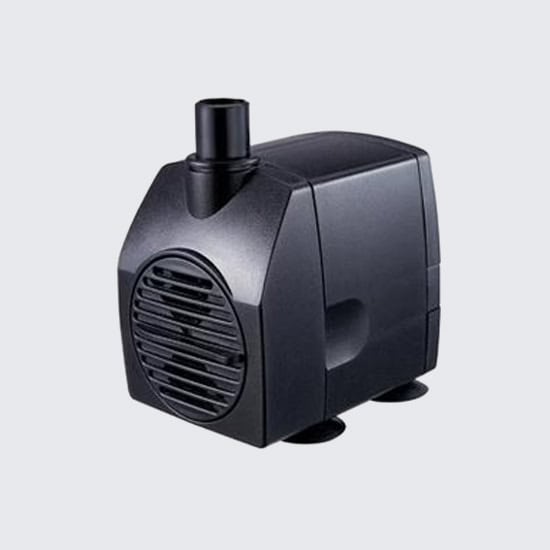
Pump Materials and Durability
The materials from which a fountain pump is constructed greatly influence its longevity and performance. We’ll discuss the most common materials used in fountain pump construction and help you select a pump that can withstand the test of time, even in harsh outdoor environments.
Adjustable Flow Rate and Fountain Patterns
The ability to control the flow rate and change fountain patterns can add versatility and creativity to your water feature. We’ll explore the benefits of adjustable pumps and how they can help you achieve different aesthetic effects. Fountain Tech pumps are only slightly adjustable because they adjust by reducing or increasing flow intake. If you need to change flow output released from the pump you will need to add a flow valve.
Noise Level and Maintenance
Noise can be a significant concern with some fountain pumps, especially external models. We’ll provide insights on selecting a pump with a noise level that suits your preferences. Additionally, we’ll discuss routine maintenance practices to ensure your fountain pump operates smoothly and quietly. In small fountains in confined spaces, often adding a sponge beneath a pump can decrease vibration and noise.
Safety and Electrical Requirements
Safety is paramount when dealing with electrical components near water. It is essential that a pump be plugged into a GFCI outlet, the kind you find in kitchens. We’ll cover the essential safety considerations and electrical requirements to install your fountain pump securely, protecting both your water feature and your loved ones.
Installation and Maintenance
Proper Installation Guidelines
Installing a fountain pump correctly is essential for its longevity and functionality. We’ll provide step-by-step installation guidelines and tips to ensure a trouble-free setup. It is essential that you choose the correct tubing or PVC size, as width of the tubing or pipe will govern how much flow you can achieve.
Routine Maintenance and Cleaning
Maintaining your fountain pump is key to its efficiency and lifespan. We’ll outline the routine maintenance tasks necessary to keep your pump in top shape, from cleaning to lubrication.
Troubleshooting Common Issues
Despite careful installation and maintenance, issues may arise. We’ll discuss common problems that fountain pump owners encounter and offer troubleshooting guidance to help you quickly address and resolve these issues.
Enhancing Aesthetic Appeal
Lighting and Fountain Pumps
To elevate the visual impact of your fountain, consider incorporating lighting elements. Submersible LED lights can be placed strategically within the fountain to create captivating effects, especially at night. The interplay between water and light can transform your outdoor space into a mesmerizing and enchanting environment. When selecting a fountain pump, ensure it is compatible with these lighting elements, as some models come equipped with built-in LED lighting options.
Fountain Design and Style Compatibility
The style and design of your fountain should align harmoniously with your overall outdoor decor. Modern, classic, rustic, and contemporary fountains may require different pump types and sizes to maintain the intended aesthetic. Consider the visual compatibility of the pump with your fountain’s design to create a unified and pleasing appearance.
Environmental Considerations
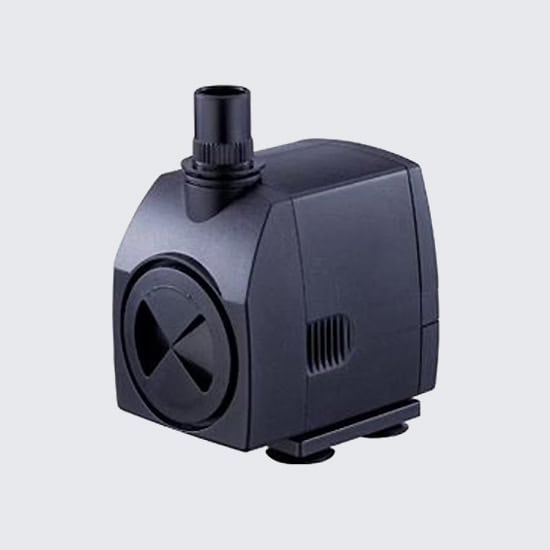
Recirculating Systems and Water Conservation
Fountain pumps are integral to recirculating water systems, which promote water conservation. These systems continuously cycle and filter the same water, reducing the need for excessive water usage. When designing your fountain, opt for a closed-loop system with a recirculating pump to minimize water waste and contribute to environmental sustainability.
Use of Natural Materials and Eco-Friendly Additions
Choosing eco-friendly materials for your fountain, such as stone or reclaimed wood, complements the environmental ethos. Additionally, you can incorporate aquatic plants within your fountain basin, which not only adds a natural touch but also aids in water purification and oxygenation.
Customization and Personalization
Adding Unique Features
Many fountain pumps come with options for customizing the water display. These can include adjustable flow rates, interchangeable nozzles, and even music synchronization for a choreographed water and light show. Tailoring your water feature to your preferences and the ambiance you wish to create is a key consideration.
Incorporating Water Filtration and Purification
To maintain the pristine appearance of your fountain, consider adding a water filtration system. Filtration helps remove debris and algae growth, reducing the frequency of maintenance tasks. By ensuring clean and clear water, your fountain will retain its allure.
Legal Regulations and Permits
Local Regulations
Depending on your location, there may be local regulations regarding fountains and water features. Some areas have restrictions on the size of fountains, noise levels, or water source usage. Be sure to research and comply with any local ordinances and acquire any necessary permits before installing your fountain.
Electrical Codes and Safety Standards
Electrical safety is of utmost importance when dealing with fountain pumps. Understanding and adhering to electrical codes and safety standards in your area is crucial to ensure the safety of your installation. It is advisable to consult with a professional electrician to guarantee compliance.
Conclusion
The right fountain pump is pivotal in creating a stunning and functional water feature. We’ve covered various aspects, from pump types to sizing, features, and maintenance, to help you make an informed choice. By understanding these key factors, you can ensure your fountain operates optimally, providing a visually pleasing and tranquil addition to your outdoor space. As a final note, we encourage responsible water usage and conservation. While fountains can be beautiful additions to any landscape, it’s essential to balance aesthetics and environmental responsibility. By choosing an energy-efficient or solar-powered pump and maintaining your fountain properly, you can enjoy the beauty of flowing water while minimizing water waste. Explore our website to learn more about fountain pumps.
Frequently Asked Questions
Can I use a submersible pump for an above-ground fountain?
Submersible pumps are designed to be placed underwater within the fountain basin. If you’re looking for an above-ground fountain, opt for an external (out-of-water) pump. Submersible pumps are not suitable for this purpose, as they may not operate efficiently and could be prone to damage if used outside of water even for a short period of time.
What’s the difference between flow rate and head height in a fountain pump, and why are they important?
Flow curve rate represents the volume of water a pump can circulate, typically measured in gallons per hour (GPH), at different vertical heights. Maximum Head, on the other hand, measures the maximum vertical distance the pump can push water. You need to be concerned with the flow curve rate. If your fountain is three feet tall from the surface of the water to the top of the fountain, how much water do you need to flow at that height? Once you know that figure, you will know which pump to purchase by looking at the pump’s flow curve.. A mismatch can result in an underperforming fountain. It’s essential to choose a pump with the right balance of flow rate and fountain height to meet your fountain’s requirements.
Can I use tap water in my fountain, or should I use distilled or purified water?
While using tap water in your fountain is generally acceptable, it’s important to note that tap water can contain minerals and impurities that may lead to scaling and buildup over time. Using distilled or purified water can help reduce the likelihood of mineral deposits and make maintenance easier. If you choose tap water, consider using a water treatment or purification system to minimize these issues.
Do solar-powered fountain pumps work well in all weather conditions?
Solar-powered fountain pumps can be an excellent choice for sustainable and eco-friendly operation. However, their performance can be influenced by weather conditions. They work most efficiently when exposed to direct sunlight. Cloudy or rainy days can affect their output. To ensure consistent operation, it’s advisable to have a backup power source or select a solar-powered pump with a battery backup feature, allowing it to function during cloudy days or in low-light conditions.


